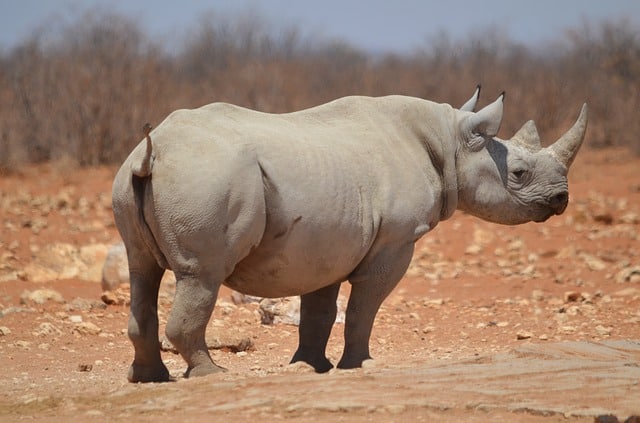In an attempt to save endangered rhino populations, scientists have collected a fake horn made of horsetail and artificial silk. It is expected that the introduction of such goods to the market will reduce the demand for real rhino horns. It is not yet known whether this method will prove to be cost-effective, but it is already clear that the fake is not easy to distinguish from the original.
Unlike the pair, the rhino horn is a bundle of tightly glued hair – about 7 per square millimetre. Cement is the secretion of the sebaceous gland on the nose and many dead cells filled with keratin (“horn protein”) and melanin (pigment-protein).
It is this design that has become the reason that several species of rhinos in Asia and Africa are threatened with extinction. In the past few years, the wild rhino population has been slowly but surely declining, from nearly 29,000 in 2013 to 27,300 in 2019. In 2018, an average of 2.4 animals per day fell victim to poachers. One of the strategies to fight may be the creation of fake horns that will fill the market and replace the originals, thereby reducing profits for poachers, which is presumably should deter them from illegal hunting.
Ruixin Mi and colleagues from Oxford and Fudan University in Shanghai offered their recipe for creating an artificial horn. As a basis, they took the hair of other equids – horses. They are similar to rhinos, however, they are still covered with an outer film – cuticle. Scientists washed their hair from the cuticle with lithium bromide and found that this way they are even better kept in a bun.
The exact composition of substances that in nature stick hair in the horn of a rhino is unknown. But since the “cement” consists mainly of cells and sebaceous gland secretions, the researchers hypothesized that most of it made up of proteins – keratin, melanin and extracellular binding proteins like fibronectin. Therefore, to replace this “cement” they offered fibroin – the protein from which silk is built, besides it is easy to synthesize in the laboratory.
With the help of horsehair and silk, scientists have collected several variants of the horns. It took just a few days to produce smaller horns — 4 centimetres in diameter and 10 in length — but large horns — 12 centimetres in diameter and 35 centimetres in length — had to be dried in the oven for weeks. Researchers then polished their artificial rhino horns and found it difficult to distinguish them from real horns.
Scientists compared their horns with the original in several ways. It turned out that under the microscope they look similar, and begin to break down at the same temperatures. Finally, the mechanical properties of the horns were also similar: they were equally resistant to stretching and bending. Researchers explain this by the composition of the horns: both the original and the fake consist of strong rods, which are easier to break than bend, and a soft layer, which is more likely bends than breaks, and these two components compensate each other.
The authors of the project do not undertake to predict the fate of their invention and calculate how much fake horns will be cheap and whether in fact will help to save the population of Rhinos. However, they note that they were able to accurately reproduce not only the structure of the horn but also its chemical composition and mechanical characteristics, which made it almost indistinguishable from the original.
Meanwhile, the program for restoring the white rhino population continues, and recently the female gave birth to the first cub conceived under the IVF program. But at the same time, the new WHO classification of diseases, which includes recommendations from traditional Chinese medicine, may contribute to the further destruction of rhinos.
